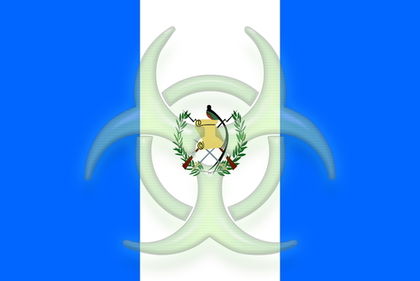Guatemala - Health

Guatemala's health care system consists of three sectors: public, private nonprofit, and private for-profit. Health coverage has been estimated to be low, with more than 40% of the population receiving no access to health care services. As of 1999, there were an estimated 0.9 physicians and 1 hospital bed per 1,000 people. As of 1999, 4.3% of GDP went to health expenditures. Among the chief causes of death are heart disease, intestinal parasites, bronchitis, influenza, and tuberculosis. In 1994, major causes of death were pneumonia and influenza (16.5%), perinatal conditions (13.8%), intestinal infectious diseases (8.9%), and nutritional deficiencies (5.7%). Malnutrition, alcoholism, and inadequate sanitation and housing also pose serious health problems. In 2000, 92% of the population had access to safe drinking water and 85% had adequate sanitation. Malaria rates are high. In 1995, there were 23,608 new cases. Cholera was reported in 7,970 people in 1995. In 1999 there were 85 reported cases of tuberculosis per 100,000 inhabitants. Guatemala does attempt to vaccinate its children and figures from 1997 are as follows: tuberculosis, 88%; diphtheria, pertussis, and tetanus, 83%; polio, 83%; and measles, 74%. All routine vaccinations are paid for by the government. It is estimated that the poorest half of the population gets only 60% of the minimum daily caloric requirement. Some steps have been taken to fortify foods with daily vitamin requirements. Currently, sugar is being fortified with vitamin A and wheat flour will be fortified with iron. Data collected from 1990 to 1998 indicates that 32% of married women (ages 15 to 49) were using contraception.
The total fertility rate was 4.6 in 2000, a dramatic reduction from 6.5 in 1980. By 1997 the maternal mortality rate had fallen to 55 deaths per 1,000 live births, down from 200 in 1990. In 2000, the infant mortality rate was 39 per 1,000 live births and the overall mortality rate was an estimated 6.7 per 1,000 people as of 2002. The average life expectancy was 65 years in 2000. From 1966 to 1992 there were about 140,000 war-related deaths.
As of 1999, the number of people living with HIV/AIDS was estimated at 73,000 and deaths from AIDS that year were estimated at 3,600. HIV prevalence was 1.38 per 100 adults; 1,371 cumulative cases of AIDS were reported between 1984 and 1996.
Political violence and problems associated with poverty have left more than 200,000 Guatemalan children orphaned. Many suffer from psychological problems and malnutrition.